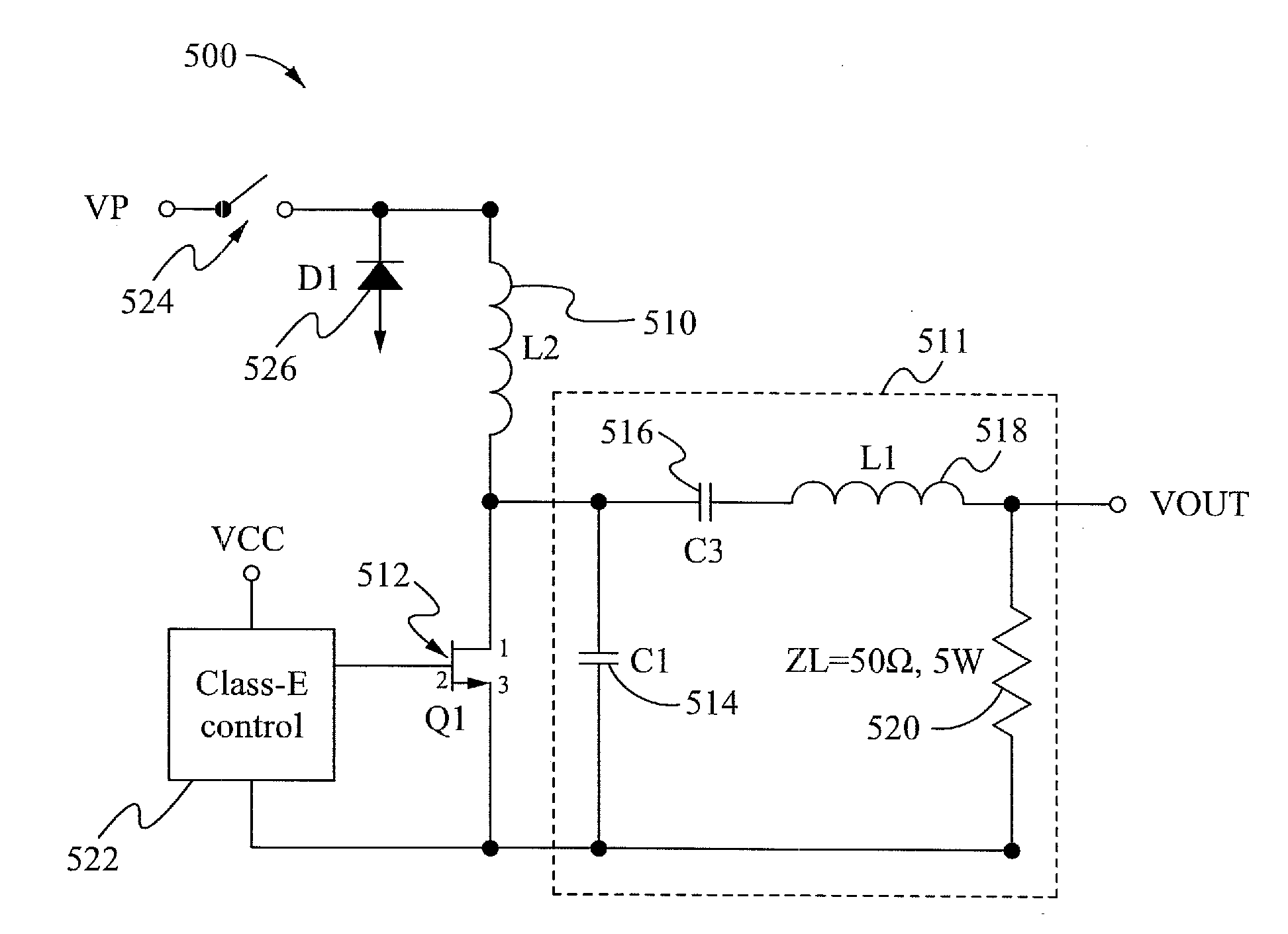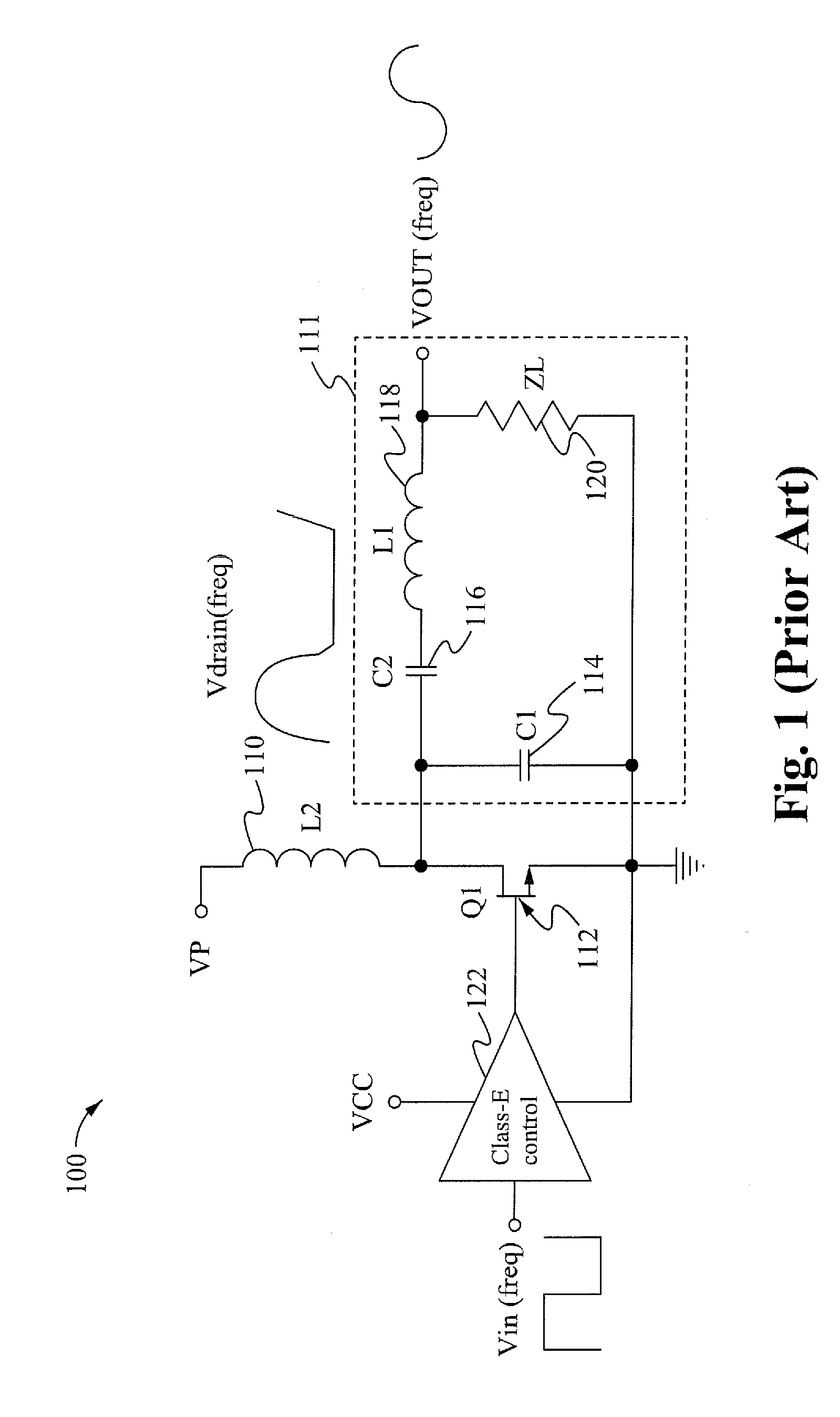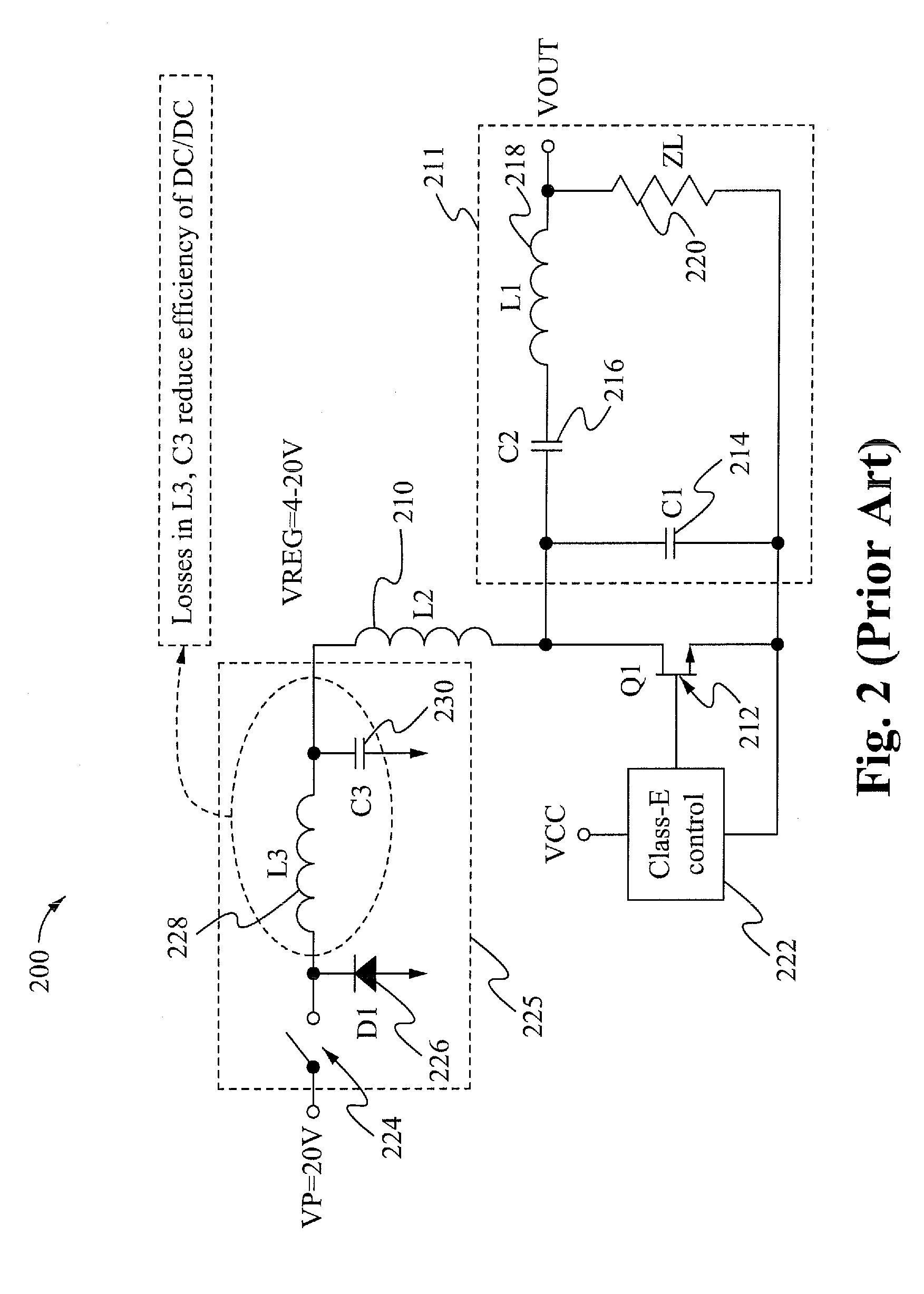Efficient power regulation for class-e amplifiers
a power regulation and amplifier technology, applied in the direction of electric variable regulation, process and machine control, instruments, etc., can solve the problems of increasing harmonic distortion, reducing efficiency or both, and increasing harmonic distortion
- Summary
- Abstract
- Description
- Claims
- Application Information
AI Technical Summary
Benefits of technology
Problems solved by technology
Method used
Image
Examples
Embodiment Construction
[0031]In the following description, numerous details and alternatives are set forth for the purpose of explanation. However, one of ordinary skill in the art will realize that the invention can be practiced without the use of these specific details. In other instances, well-known structures and devices are shown in block diagram form in order not to obscure the description of the invention with unnecessary detail.
[0032]The present invention provides a power converting circuit with an increased efficiency of Class-E amplifiers and power converters. The present invention provides optimization of power transferred to a load circuit. The present invention also provides a savings of an inductor and capacitor from a customer bill of materials for each device made according to the invention. The present invention is a significant improvement over conventional Class-E amplifiers that use conventional buck converter circuits.
[0033]Turning to FIG. 5, a schematic diagram of a power converting ...
PUM
 Login to View More
Login to View More Abstract
Description
Claims
Application Information
 Login to View More
Login to View More - R&D
- Intellectual Property
- Life Sciences
- Materials
- Tech Scout
- Unparalleled Data Quality
- Higher Quality Content
- 60% Fewer Hallucinations
Browse by: Latest US Patents, China's latest patents, Technical Efficacy Thesaurus, Application Domain, Technology Topic, Popular Technical Reports.
© 2025 PatSnap. All rights reserved.Legal|Privacy policy|Modern Slavery Act Transparency Statement|Sitemap|About US| Contact US: help@patsnap.com



